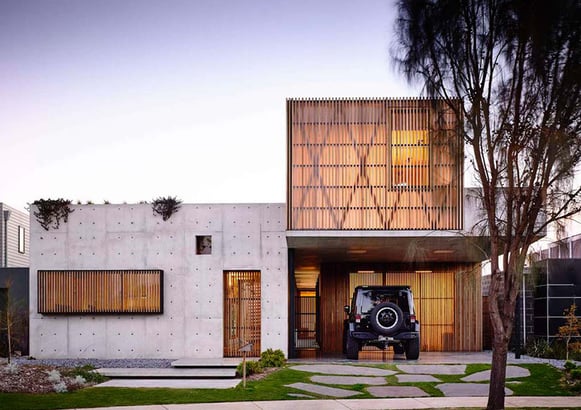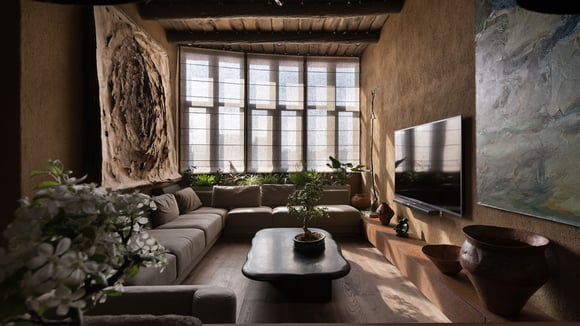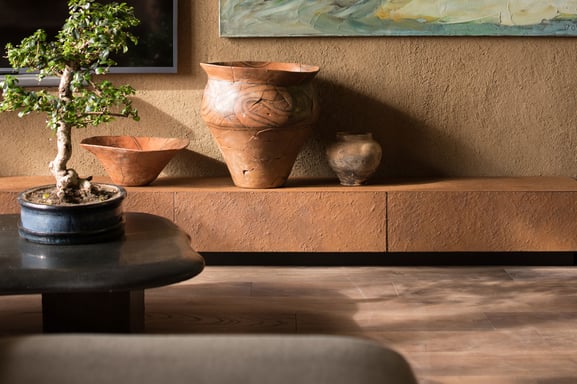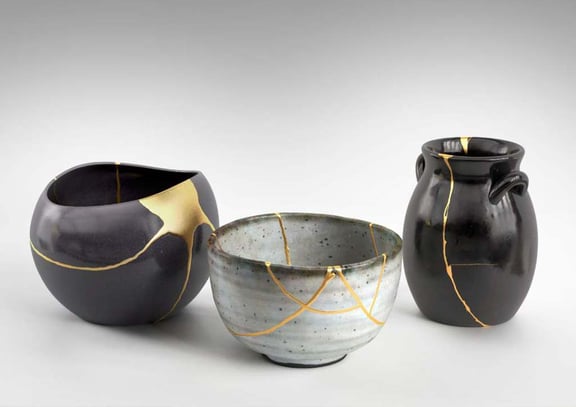Wabi Sabi is a Japanese philosophy and design concept that embraces the perfection of imperfection in all things. Sen no Rikyū, one of Japan's earliest known tea masters, recognized the beauty in simplicity and modest lifestyle. Hence, inspired by this way of life, we now have Wabi Sabi architecture. It features elements of minimalism, using natural materials and colours, cultivating an appreciation for the natural cycle of growth and decay in all things.
Torquay Concrete House by Auhaus Architecture
Photo by Derek Swalwell
Wabi comes from the word 'Wa', referring to harmony, peace, tranquillity and balance. While Sabi means 'bloom of time', referring to the effect of time on an object. Accepting things' beauty is fleeting and embracing the aesthetic of objects or surroundings that have aged with time.
Beyond Minimalism

Apartment by Sergey Makhno in Kiev, Ukraine.
Photo by Andrey Avdeenko.
In modern architecture, designers tend to associate Wabi Sabi aesthetic with minimalism. However, it is more comprehensive than that. The design should focus on bare essentials, with no overbearing embellishments or luxurious features. Keeping only what brings beauty, nostalgia and function to a home.
In interior spaces, the key is authenticity. Opting for originally manufactured materials rather than mass-produced ones is one way to go. Wabi Sabi welcomes asymmetry and irregularity, as natural contours connect back to earth's energy, further enhanced by applying earthy colour tones.
Applying these approaches will give a deeper for the ones living in the space. Keeping only essentials and utilizing the earth's natural resources will ensure a calm and happy spirit.
Going against the grain

Interiors with nature @Kojoandlee
Wabi Sabi focuses on bringing things that reflect your inner self to your home; there is no need to have any particular style trend in mind. The aim is to bring the user joy, allowing the user to be as original and quirky as they like.
A theme often recurring in Wabi Sabi architecture is biophilia. Biophilic features focus on introducing natural light, plenty of plants and purified air, which are relevant to appreciating nature. Wabi Sabi works with ideas partially or entirely, depending on the need.
In contrast, metal, brass and copper are popular choices for finishes. Adding on to the theme of rustic simplicity. Sometimes a deliberately worn-out look can add to the character of a rustic space.
Reuse and Reform- The Art of Kintsugi
Kintsugi Pottery – Photo by Elledecoration.vn
We can learn from the practice of kintsugi, a Japanese concept of fixing broken pottery with gold, turning imperfection into something exquisite and valuable.
Wabi Sabi encourages a sustainable approach. Reusing old furniture by refurbishing and giving it a new life is a great way to live in harmony with imperfections.
Instead of buying new commercial furniture, consider visiting flea markets or independent stores. Often providing more affordable options, which tend to allow creativity to flow in terms of how it is presented in a hom
The art of achieving Wabi Sabi
 Photo by Andrey Avdeenko
Photo by Andrey Avdeenko
So how can we apply Wabi Sabi to our homes? Besides authenticity, nature is often used to embrace imperfections. To amplify natural elements, consider using raw textures, earthy hues and natural materials. According to Wijaya and Zen teachings, Wabi Sabi can be distilled into seven key elements:
- Kanso – simplicity
- Fukinsei – asymmetry or irregularity
- Shibumi – beauty in the understated
- Shizen – naturalness without pretence
- Yugen – subtle grace
- Datsuzoku – freeness
- Seijaku – tranquillity
These seven tenets are easily applied when cultivating a calm space. Translating the design concept to a tangible environment is not about adding or eliminating elements or making details perfect but finding harmony in authenticity and imperfection, promoting an overall sense of peace and tranquillity. It helps humans find beauty in the simplest of things and in life's imperfections.











